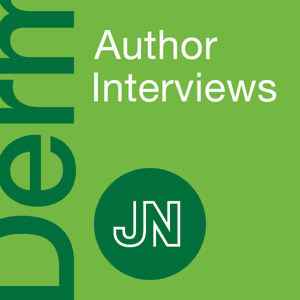In this episode of Derms and Conditions, host James Q. Del Rosso, DO, is joined by Natasha Mesinkovska, MD, associate professor of Dermatology at UC Irvine, to discuss the multifaceted challenges of alopecia areata (AA), an autoimmune condition with complex comorbidities and broad psychosocial implications.
The conversation begins with the stigma of hair loss and the importance of addressing the patient’s emotional well-being. Dr Mesinkovska highlights her approach: asking simple but direct questions about how patients are coping and connecting them with mental health resources when needed.
Comorbidities and workup are also addressed, with Dr Mesinkovska sharing her pragmatic approach to labs: thyroid-stimulating hormone test as a baseline, selective additional testing for patients with indicators of comorbidities, and requesting consultation with endocrinology when indicated. Prognosis is also discussed, with childhood onset and family history noted as adverse factors.
They next explore treatment expectations, beginning with the typical timeline of response seen with oral JAK inhibitors and the importance of allowing several months for optimal hair regrowth. Many patients, once regrowth occurs, ask when they can stop therapy in hopes that results will persist without ongoing treatment; this is an important moment to counsel patients on the chronic nature of AA and emphasize that discontinuing therapy often leads to renewed hair loss. Continuing oral JAK inhibitor therapy offers the greatest likelihood of maintaining regrowth over time.
They review clinical data on the durability of response of the JAK inhibitors for AA, which has shown that relapse of hair loss is common once treatment is discontinued. For those who elect to stop therapy, it is essential to emphasize the need to resume treatment promptly at the first signs of relapse, under supervision of their dermatologist. Ongoing clinical and laboratory monitoring is also highlighted as critical to ensure long-term safety.
Dr Mesinkovska then discusses differential diagnoses for AA, covering lichen planopilaris, trichotillomania, and other mimickers, with biopsy reserved for challenging cases.
She next reviews the 3 approved JAK inhibitors for AA, baricitinib, ritlecitinib, and deuruxolitinib, highlighting differences in efficacy, dosing, speed of response, and the role of CYP2C9 testing specific to deuruxolitinib. Clinical study data are used to outline the features that distinguish deuruxolitinib, the newest oral JAK inhibitor, from the other agents. These include a potentially faster onset of hair regrowth, enhanced efficacy with twice-daily dosing, and the ability to identify individuals who metabolize the drug more slowly through CYP2C9 testing.
Tune in to the full episode to hear how dermatologists can assess comorbidities, select systemic therapies, manage patient expectations, and support the psychosocial needs of those with AA to achieve more comprehensive care.




































